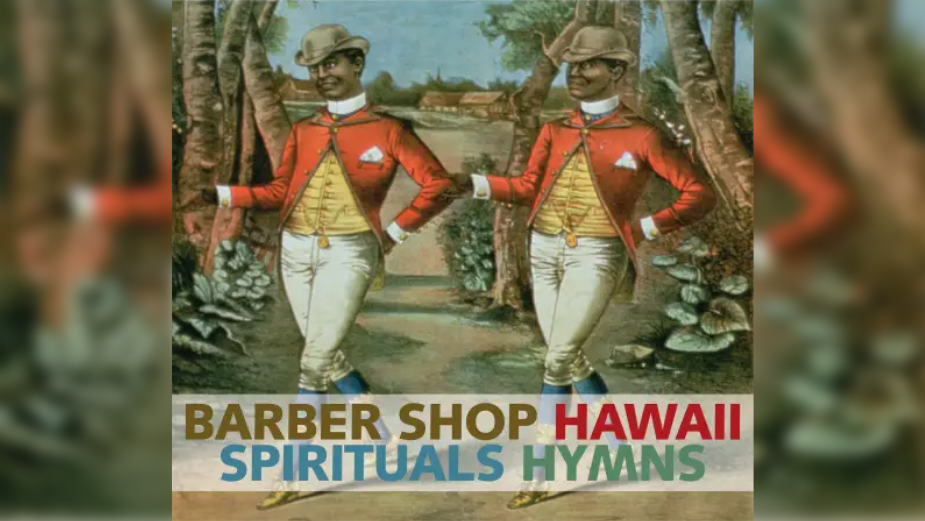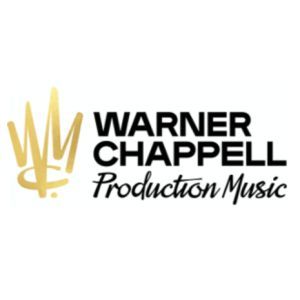
Raiders of the Lost Archive: Barber Shop - Hawaii - Spirituals - Hymns

Warner Chappell Production Music is one of the few production music libraries who can offer authentic archival production music recordings as well as cutting-edge contemporary releases. Dating back in some cases to the 1920s and moving through to the 1960s, the CPM Archive Series can offer us a unique glimpse into the music of the past. In this regular series, Raiders of the Lost Archive, we will explore that past, this time focusing on a release that is as broad as its song are old…
At first glance, Barber Shop – Hawaii - Spirituals – Hymns can seem to be quite a disjointed and incohesive album. It is a broad collection of songs and styles from a bygone age which at times seem to range too far apart from one another to make any sense as a whole; from Victorian era music hall songs and novelty numbers to spirituals and religious hymns, but listening to the music of the album quickly brings a bigger picture into focus.
While the recordings come from the 1920s, '30s and '40s they weave together to tell a much older story. Even at the time of recording, some of the songs were already over 100 years old. When put together, they paint a portrait of an old America. An America where wandering troubadours and minstrels travelled from town to town to bring humorous songs such as Who Threw the Overalls in Mrs. Murphy's Chowder to any audience who would listen. An America where slaves sang as they toiled in the fields while the white upper classes gathered for balls and soirees.
The tracks are divided on the album by style; barroom and barbershop, spirituals and hymns but they could also be divided into “white” and “black”, as they surely would have been, at the time they were most popular; some to be sung in moneyed rooms and mansions and some to be sung in the fields. Perhaps the structuring of the album could even reflect an American Vaudeville performance, popular at the time a lot of these tracks were written, where a ranging collection of acts would be brought together and included comedy, tragedy and everything in-between.
All the songs on Barber Shop – Hawaii – Spirituals – Hymns are recordings of tracks in the public domain and all have stories and lives of their own. Each of these recordings were arranged by Harry Bluestone, a prolific English composer and arranger who worked as a violinist in the 1930s with Benny Goodman, Artie Shaw and The Dorsey Brothers; the biggest and most influential bandleaders of their time. After enlisting in the Airforce during WW2, Bluestone organised multiple Air Force Orchestras, including one that replaced Glenn Miller's orchestra following the bandleader's mysterious disappearance.
Continuing to lend his violin talents throughout his post-war career, Bluestone worked with artists as diverse as Bing Crosby and Tom Waits, Doris Day and Neil Diamond, Peggy Lee, Lee Hazlewood, Frank Sinatra, Dolly Parton and more and also became an in-demand conductor and band leader for acts like Judy Collins, Roger Miller and Dinah Shore. A prolific worker, Bluestone was the featured arranger for thousands of tracks in the CPM Archive Series.
Barber Shop – Hawaii - Spirituals – Hymns opens with a beautiful reading of My Sweetheart’s the Man in the Moon. Written in 1892 by James Thornton, the version here blends traditional barbershop vocals with an understated piano and occasional acoustic guitar, invoking the stylings of The Ink Spots or The Jordanaires. The performance from the vocal group on this song, and the numbers that follow (including well-known pieces like The Man Who Broke the Bank at Monte Carlo and Whilst Strolling Through the Park One Day) bridge the racial divide of the history of the songs by blending together various styles and phrasings of the time.
Another well-known tune to be featured early in the album is And The Band Played On. Originally written by American composer John F. Palmer, the song features an unusual 2/4 time signature during its verses, and moves to the more familiar 3/4 time signature in the chorus. Other songs in 2/4 time include Joan Jett’s cover of I Love Rock ‘n’ Roll and Heaven is a Place on Earth by Belinda Carlisle, whilst both Ring of Fire by Johnny Cash and Hey Ya by Outkast utilise the time signature in part, much like And the Band Played On does.
Although the songs presented from the late 1800s are very different in their lyrical composition from the spirituals that follow them on the album, some other similarities that bridge their divides are clear. The moon has always been used symbolically in music – from Moon River to The Whole of the Moon, Beethoven’s Moonlight Sonata to Phoebe Bridgers’ Moonsong – three songs across this album alone reference the moon in their title.
The moon isn’t the only natural element to reappear across the songs, either, with the weather being a repeating theme across both this selection and the wider genres that the album draws from. Featured here, both Didn’t It Rain and I’ve Been in the Storm Too Long use the weather as strong descriptors. Whether the weather is used as a central theme or just in passing, it appears again and again, including one of the Hawaiian selections on the album, the dual-language Aloha Ae, which opens with a description of the rain rolling over the cliffs.
Flood songs have long been a staple of the spiritual and blues idioms, with tracks like When the Levee Breaks by Memphis Minnie, High Water Everywhere by Charley Patton and Backwater Blues by Bessie Smith all being written about the great Mississippi flood of 1927 (which also inspired Randy Newman’s 1974 song Louisiana 1927), that remains the single most destructive flood that North America has ever seen.
Instead of singing about a flood of biblical proportions, the narrator of Didn’t It Rain is singing about the biblical story of Noah’s flood. Here the story is told by a vocal quartet accompanied by a piano and percussive stomping. Noah’s flood has inspired as many songs as the 1927 Mississippi flood did, with its most recent musical update coming from Jeff Tweedy in 2017 in the form of his song Let’s Go Rain.
One of the most famous versions of Didn’t It Rain comes from Sister Rosetta Tharpe, a hugely influential figure in the birth of Rock and Roll. Starting out her recording career at age 23, Tharpe recorded four songs for Decca at the end of 1938 that were instant sensations and bridged the gap between white and black audiences. Not everyone was pleased with her fusion of gospel influences and secular music, though, and many churchgoers were quick to voice their concerns.
Tharpe can be considered one of the original “guitar heroes”; first learning to play at age six, her virtuosity on the instrument (she played on resonator guitars until switching to various electric models in 1947, before settling on a White Les Paul Custom in 1960 which went on to become the blueprint for Gibson’s iconic SG models) can be heard on her version of Didn’t It Rain, as well as her most famous hit, Strange Things Happening Every Day, from 1945.
By the end of the 1940’s Sister Rosetta Tharpe’s fortunes had started to fade as the rise of another gospel giant threatened her place in the charts. Mahalia Jackson’s career was starting to take off, and her voice and presence were undeniable and unstoppable. Jackson also frequently incorporated Didn’t It Rain in her live sets, as well as other spiritual staples like Sometimes I Feel Like a Motherless Child, Nobody Knows the Trouble I've Seen and Joshua Fit the Battle of Jericho, the last of which is also featured on CPMs Barber Shop – Hawaii - Spirituals - Hymns.
Perhaps the most famous of all the religious spirituals on the album, though, is Go Down Moses. It is unknown who wrote the song, and the song may not even have just one songwriter, but likely started as so many spiritual songs did as a call-and-response tune amongst slaves whilst they worked. The lyrics tell the story of the liberation of ancient Jewish slaves from Egyptian rule as recounted in the Old Testament. With its hopeful message of liberation, it is no wonder that it was often sung by African slaves in the American south in the early 1800s.
The version on Barber Shop – Hawaii - Spirituals - Hymns most closely resembles Paul Robeson’s 1953 version, with the deep baritone a haunting reminder of the weight and history of the lyrics. Other artists to have recorded the song include Louis Armstrong, Mavis Staples, Nat ‘King’ Cole and Darondo.
Just as broad as the genres included on Barber Shop – Hawaii - Spirituals – Hymns; just as broad as the pictures the songs paint and just as diverse as the other artists who have performed these songs are is the placements they have received across television and film. And the Band Played On featured in Alfred Hitchcock’s 1951 picture Strangers on a Train; Go Down Moses is sung in Gone With the Wind (and was also later referenced in Ferris Buellers Day Off), She’s Only a Bird in a Gilded Cage is performed by Zooey Deschanel as the character Dorthey Evans in 2007s The Assassination of Jesse James by the Coward Robert Ford.
The recordings from the CPM Archive Series have also been used extensively across countless SpongeBob SquarePants episodes as well as in BBCs Horizon series, the 2019 Belgian drama Young Ahmed and in Discovery’s A Crime to Remember.
The songs may come from another era and another world but to listen to them now as presented here, the recordings are timeless.
Click here to listen to BARBER SHOP - HAWAII - SPIRITUALS - HYMNS.










